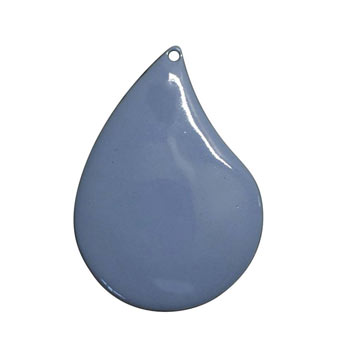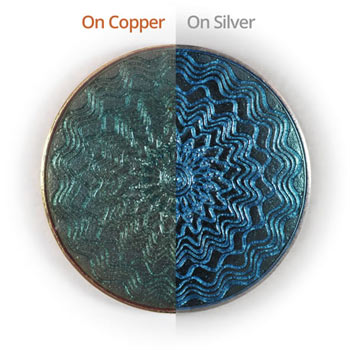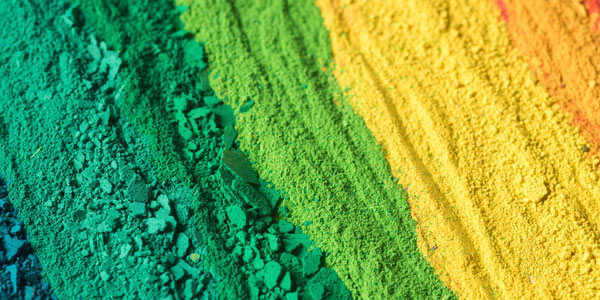As an ancient jewellery making technique that has been adopted by modern jewellers, enamelling can result in colourful, unique designs. But what is enamelling? And what is enamel made of?
The enamelling process involves fusing tiny glass particles with heat to form a solid layer of colour onto a variety of different metals, such as copper, sterling silver, fine silver and 18ct or 22ct gold.
What is enamel made of?
The enamels themselves are tiny particles and can be used dry as a powder, which is often sieved onto the metal surface. It can also be used wet as a paste or liquid, which is created by adding a binder (such as an organic gum) that can then applied with a fine brush. Particles must be ground to an ultra-fine consistency with a pestle and mortar and thoroughly washed with distilled water at regular intervals to keep everything scrupulously clean.
Depending on the enamel powders used, the finish and colour can be matte, shiny, opaque or translucent. There are various types of enamel but the two most popular finishes are as follows.
The Types of Enamel
Opaque enamels
These types of enamels are non-transparent in colour and therefore, once fired, are a more solid colour on the enamelled pieces. Opaque enamels are supplied in a variety of different colours and come either with a matte or glossy finish.

Transparent enamels
Transparent enamels are used to layer, shade and blend different colours into enamelled pieces. As you can see through the transparent colours, they can also be used with other media such as silver and gold foils, or millefiori, to create different effects.

Find out more about the different types of enamel.
How to Enamel Jewellery at Home
In order to fuse the enamel powders to the metal, heat is applied to the piece. A high temperature torch can be used especially when fusing on smaller pieces, but most enamellers find using a kiln preferable as these provide the stable hot temperatures needed to fuse. Different enamel powders require different temperatures, but as a guide it can be anything between 700 and 950°C.
Depending on the enamelling technique, there may be multiple firings in a single piece as the enamel is applied in layers.
Learn more about the different enamelling techniques.
Discover our guide on how to enamel jewellery at home for the step-by-step process.
Is enamel jewellery durable?
The various types of enamel are all quite durable and aren’t prone to much damage, which makes enamel the ideal choice for everyday jewellery. It’s also pretty easy to maintain and keep clean – you just need to follow the same steps you would take to clean your other jewellery.
Is enamel jewellery expensive?
Enamel jewellery is typically more affordable than popular alloys, but the antique pieces can cost a lot more – as would be expected. There are also big jewellery brands who use enamel within their designs, which can hike the prices up, like Cartier for example.
Now you know what enamelling is, it’s time to get started. You will find what you need in Cooksongold’s extensive range of enamelling supplies. For an extra helping hand, why not browse our selection of enamelling books? You’ll learn more about what enamelling is and hopefully get some extra inspiration for your next project.

Cooksongold

